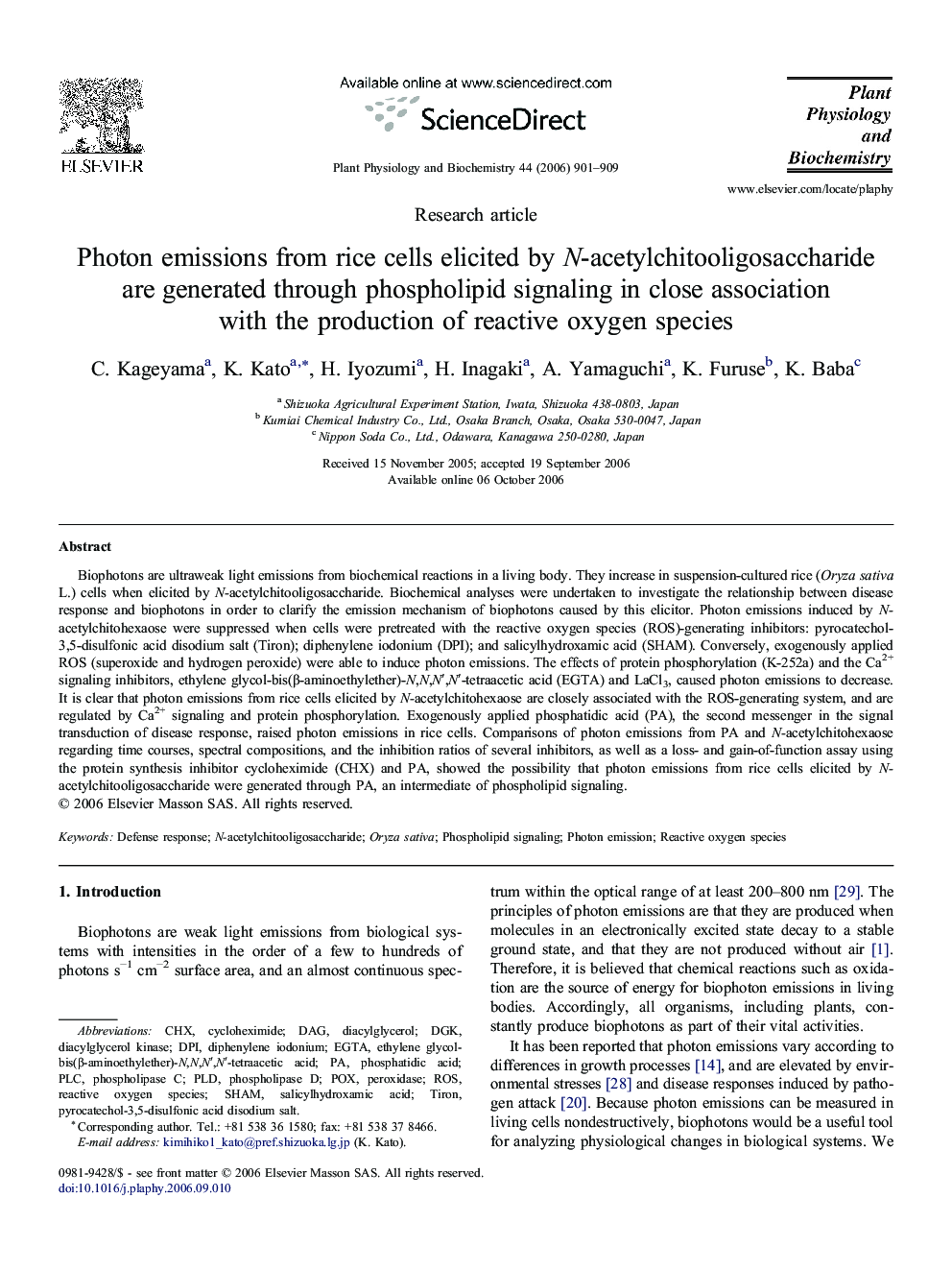| کد مقاله | کد نشریه | سال انتشار | مقاله انگلیسی | نسخه تمام متن |
|---|---|---|---|---|
| 2016634 | 1541980 | 2006 | 9 صفحه PDF | دانلود رایگان |

Biophotons are ultraweak light emissions from biochemical reactions in a living body. They increase in suspension-cultured rice (Oryza sativa L.) cells when elicited by N-acetylchitooligosaccharide. Biochemical analyses were undertaken to investigate the relationship between disease response and biophotons in order to clarify the emission mechanism of biophotons caused by this elicitor. Photon emissions induced by N-acetylchitohexaose were suppressed when cells were pretreated with the reactive oxygen species (ROS)-generating inhibitors: pyrocatechol-3,5-disulfonic acid disodium salt (Tiron); diphenylene iodonium (DPI); and salicylhydroxamic acid (SHAM). Conversely, exogenously applied ROS (superoxide and hydrogen peroxide) were able to induce photon emissions. The effects of protein phosphorylation (K-252a) and the Ca2+ signaling inhibitors, ethylene glycol-bis(β-aminoethylether)-N,N,N′,N′-tetraacetic acid (EGTA) and LaCl3, caused photon emissions to decrease. It is clear that photon emissions from rice cells elicited by N-acetylchitohexaose are closely associated with the ROS-generating system, and are regulated by Ca2+ signaling and protein phosphorylation. Exogenously applied phosphatidic acid (PA), the second messenger in the signal transduction of disease response, raised photon emissions in rice cells. Comparisons of photon emissions from PA and N-acetylchitohexaose regarding time courses, spectral compositions, and the inhibition ratios of several inhibitors, as well as a loss- and gain-of-function assay using the protein synthesis inhibitor cycloheximide (CHX) and PA, showed the possibility that photon emissions from rice cells elicited by N-acetylchitooligosaccharide were generated through PA, an intermediate of phospholipid signaling.
Journal: Plant Physiology and Biochemistry - Volume 44, Issues 11–12, November–December 2006, Pages 901–909